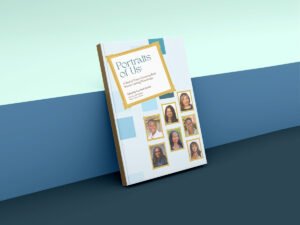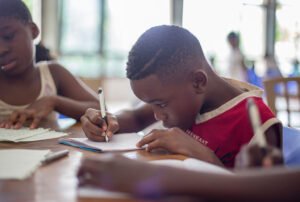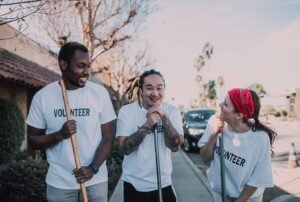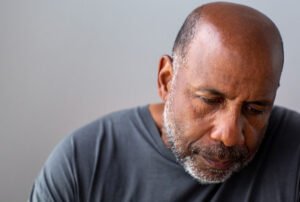
Editor’s Note: This piece is part of our ongoing Equity, Diversity, and Inclusion (EDI) Project created to spotlight millennials’ voices and thoughts on diversity and justice. We urge you to read how this project came together in collaboration between NPQ and the Young Nonprofit Professionals Network and about the ideology behind this series. We intend to publish another 15 pieces in the coming months. Readers will be able to subscribe to an RSS feed to follow articles as they are published. NPQ and YNPN will be using the hashtag #EDISeries, so post about the series along with us.
Each year in San Diego and Riverside Counties together, more than 10,000 children who have been abused, abandoned, or neglected will pass through the foster care system. Voices for Children (VFC), a local nonprofit organization, provides children in foster care with volunteer Court Appointed Special Advocates, or CASAs. Our work is dependent on volunteers—CASAs are central to our mission—and they are engaged in highly sensitive work, so who they are and what communities they represent are very important to us. Each volunteer and the makeup of our volunteer pool as a whole matter a great deal to our organization and to the children.
CASAs undergo a rigorous screening process before they are matched with a child or group of siblings in foster care. CASAs receive extensive training on working with foster youth, communicating with professionals in the field, and navigating the foster care system. After getting to know their case children, professionals, family members, and others involved in the case, CASAs provide critical information to the juvenile court in order to provide a clearer picture of the circumstances in the child’s life. This helps judges to make thoughtful, well-informed decisions for each child. In what can be an overburdened and often underfunded system, a CASA volunteer provides oversight, stability, and consistency.
A few years ago, we began focusing on an aspect of the organization that we felt needed attention: the distinct lack of diversity in our volunteer corps. We knew that a diverse pool of volunteers would be valuable in terms of enriching our organization with new knowledge, perspectives, ideas, and experiences. It would also allow us more options when matching individual CASAs to children, helping us to make the best, most successful match possible. Having a volunteer with whom a child can inherently relate or identify to can allow a bond to form more quickly and help to overcome some initial obstacles. It can also give a child a connection to a larger community from which he or she may have been removed when placed into foster care. But our volunteer recruitment team had in the past found itself in the position of having to prioritize the need for diversity on the one hand and the need for sheer numbers in our volunteer corps on the other.
We knew our sweet spot when it came to volunteer recruitment: Historically, without any targeted recruitment campaigns, our efforts have yielded hundreds of white, middle-aged women each year. These women make fantastic CASA volunteers, but we recognized that we had to broaden our strategies in order to recruit a more diverse pool. Currently, our volunteer base comprises approximately 85 percent women and 15 percent men, yet the children we serve are 50 percent female and 50 percent male. And, racial demographics are skewed, as the vast majority of our volunteers are white while the majority of children in foster care in our region are nonwhite.
We had conducted interviews with foster youth on the topic of diversity, and it had been all too easy for us to take what they told us at face value and ignore our concerns. They said that it was more important to have a caring adult support them, period, than to have a CASA who reflects their own community. But what if we were able to include demographics as a consideration when matching them to a CASA? We knew that we owed it to our youth and volunteers to set an example of what a truly reflective and inclusive volunteer community could look like.
Case Study: LGBTQ Initiative
With so many aspects to diversity, we had to decide on a starting point. In 2014, we began a targeted diversification effort with outreach to the LGBTQ community. The decision to begin with the LGBTQ community was informed by several factors and events:
- There is overrepresentation of children in foster care who identify as LGBTQ.1
- Advocacy efforts around the United States were increasing to promote marriage equality and eliminate discrimination of LGBTQ individuals in the workplace and community, thus heightening public awareness and understanding.
- A VFC staff member learned about the Human Rights Campaign (HRC) Foundation’s All Children–All Families initiative and designation process2 regarding advocacy for LGBTQ youth, and brought it to VCF’s attention.
- A new CASA volunteer told us he had been turned away by other organizations because he was gay, and commented on the unfair stigma put on gay men who want to volunteer with children.
According to a 2014 report by The Williams Institute on the Los Angeles Foster Youth Study—which the institute coauthored with the Los Angeles LGBTQ Center and Holarchy Consulting—there are one-and-one-half to two times as many children identifying as LGBTQ in foster care as there are outside of foster care. Many of these LGBTQ youth have been rejected by their biological families because of their sexual orientation, gender identity, or gender expression. In addition, while in foster care, they are more likely to experience bias, harassment, and discrimination from both peers and service providers. They are also more likely to live in group homes (as opposed to foster homes or relative caregivers) and are more likely to have multiple placements than children who do not identify as LGBTQ.3
Sign up for our free newsletters
Subscribe to NPQ's newsletters to have our top stories delivered directly to your inbox.
By signing up, you agree to our privacy policy and terms of use, and to receive messages from NPQ and our partners.
The HRC’s All Children–All Families initiative provides a comprehensive framework that assists organizations in establishing policies and practices that welcome, support, and affirm LGBTQ youth, staff, and volunteers. Discussions about whether VFC could secure resources and commit the organization to the process for designation began in July 2014, with staff from different departments and at various levels, including members of the program and recruitment teams, the human resources director, and the CEO. The team completed an organization self-assessment and received technical assistance and coaching on next steps from the HRC. From September 2014 to April 2015, the team worked to align VFC policies, procedures, training, and forms with the HRC’s best practices. The designation process involved meeting ten key benchmarks of LGBTQ cultural competency to create an inclusive agency environment:
- Client Non-Discrimination
- Employment Non-Discrimination
- Organizational Partnerships & Non-Discrimination
- Agency Forms
- Staff Training
- Staff Advocates
- Client Advisory Boards & Community Expertise
- Agency Environment & External Communications
- Training & Support for Resource Families
- Client Services & Referrals4
In May 2015, we were designated a “Leader in Supporting and Serving LGBTQ Youth.”
We learned much from this endeavor, including the fact that increasing diversity requires ongoing and holistic organizational investment. What we thought would take two months, in fact, took almost a year. We had to start by building a foundation from our internal environment out. Without staff training and understanding, and policies and procedures supporting inclusivity, diversity efforts would likely falter, and outcomes would fall short. Externally, we recognized the need to be more present in and to listen to the communities we serve, and to acknowledge when we required outside expertise to support our work. As an organization, we had to better understand the real needs of diverse communities by genuinely engaging with them and recognizing the value that their input can bring, without making assumptions about what those needs might be. The feedback we received from the LGBTQ community and the HRC helped us to tailor the promotion of our volunteer opportunities and enhance the support we provide to better meet the needs of both prospective and current volunteers. After all, how and why individuals volunteer is often tied to their upbringing and cultural understanding of service, as well as to how they view the world around them and how aligned they feel with the groups for which they volunteer.
Strategic and sustainable implementation requires patience and persistence in building and nurturing relationships in the community. Being committed to diversity requires more than just attending one community event or simply matching LGBTQ volunteers with LGBTQ youth. It requires transparency, humility, and the willingness to ask questions, admit where one still has room for improvement, and maintain openness to listening and learning. People recognize insincerity, and to be successful, one must be authentic.
Where Next?
Some of the questions that must be asked when working to increase diversity can be awkward and uncomfortable. But without confronting such questions, an organization cannot determine where it really stands or where there is still work to do.
For example, we wondered if announcing our designation related to advocacy for LGBTQ youth would turn off some of our more conservative donors. At a time when we have big fundraising goals (97 percent of our funding is raised through private donors, corporations, and foundations), this was a real consideration. However, we had no other choice in the matter if we were to honor our mission and values to provide the very best advocacy for children in foster care. Fortunately, our donors were, for the most part, receptive, and continue to support our efforts.
We recognize that, until this point, we were leaning on the notion that we could provide the best advocacy to our children regardless of the diversity of our volunteers—but we have journeyed far beyond that point. However, we are still in transition. For instance, we still hold fundraising events that could be called traditional and heteronormative. One such event targets women and features boutique shopping, wine, and a fashion show; another targets men and features casino games, whiskey, and cigars. Upon hearing about these events, some prospective volunteers have been quick to point out the stereotypes—as they should. So, while we have made progress in some areas, there is still room for improvement. Transitions tend to challenge one to be different in ways one could not have imagined at the start of the shift. The HRC designation provided structure and tangible goals, and now serves as a framework for future initiatives. It will certainly take hard work to create an institutional culture where diversity is embedded as the norm. It takes commitment to iterative work over time. But we are not changing by ourselves. The world is also changing, and we are, after all, trying to create a part of that change. In doing so, we will address additional artifacts as we become aware of them. We will continue to challenge ourselves and our organization to best meet the needs of our children.
Notes
- As defined by the Human Rights Campaign, overrepresentation means “the percentage of youth in foster care who are LGBTQ-identified is larger than the percentage of LGBTQ youth in the general youth population.” See “LGBTQ Youth in the Foster Care System,” Human Rights Campaign’s website.
- Once a participating organization has met ten key benchmarks of “LGBTQ Cultural Competency—from client non-discrimination policies and inclusive agency paperwork, to staff training and creating an LGBTQ-inclusive agency environment,” it is designated a Leader in Supporting and Serving LGBTQ Youth and Families. The organization is also awarded the All Children—All Families Seal of Recognition. For more information, see “All Children—All Families: About the Project,” Human Rights Campaign website.
- Bianca D. M. Wilson, Khush Cooper, Angeliki Kastanis, and Sheila Nezhad, “Sexual and Gender Minority Youth in Foster Care: Assessing Disproportionality and Disparities in Los Angeles,” The Williams Institute, Los Angeles, CA, August 2014.
- “All Children—All Families: Benchmarks of LGBTQ Cultural Competency,” Human Rights Campaign, accessed April 22, 2016.










